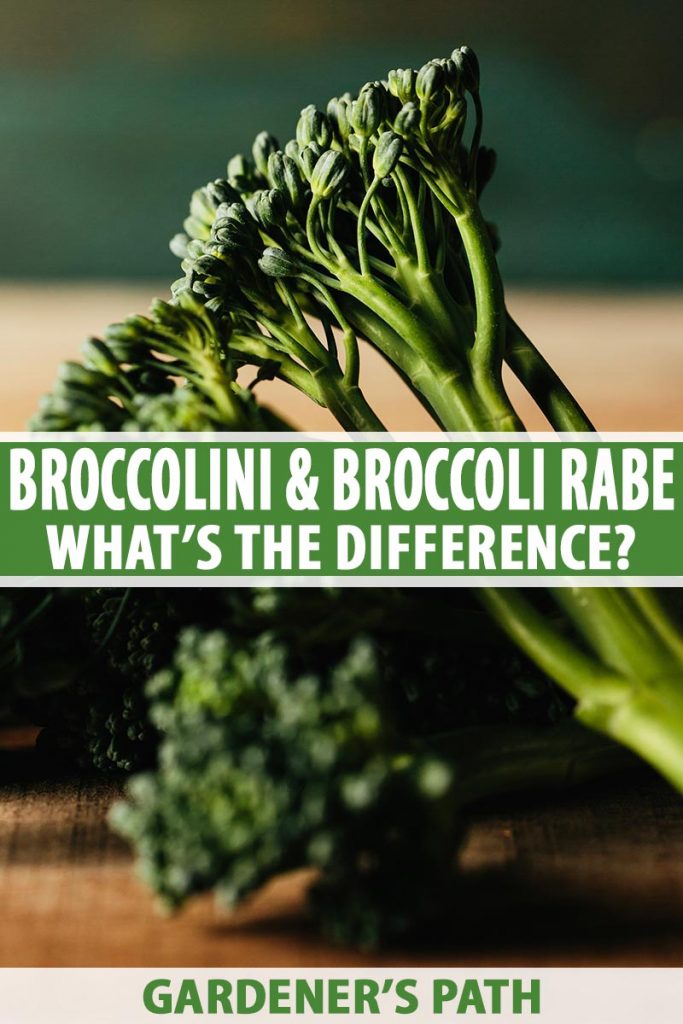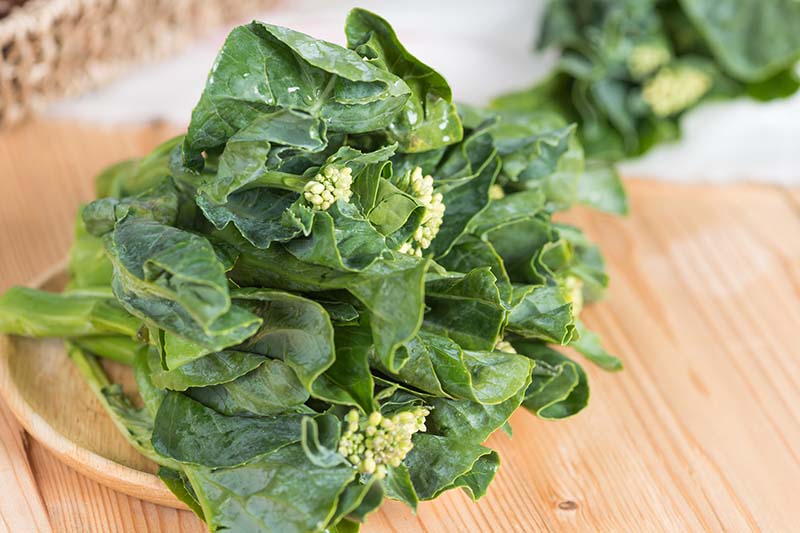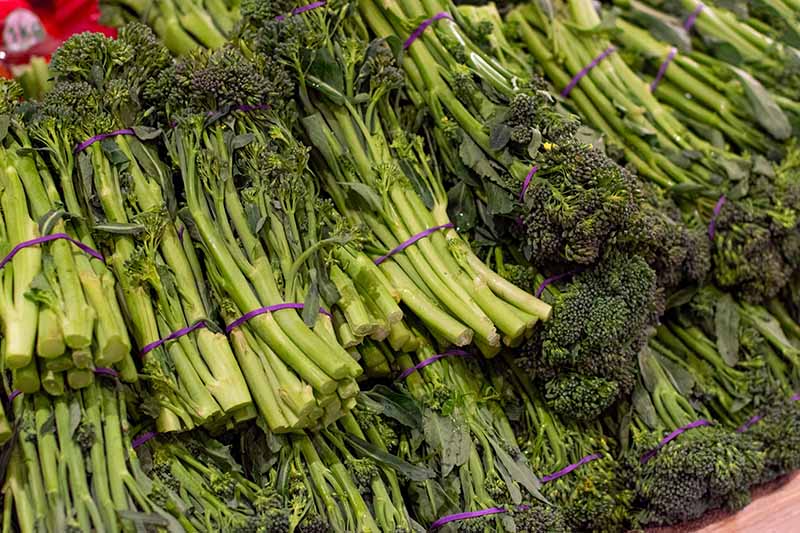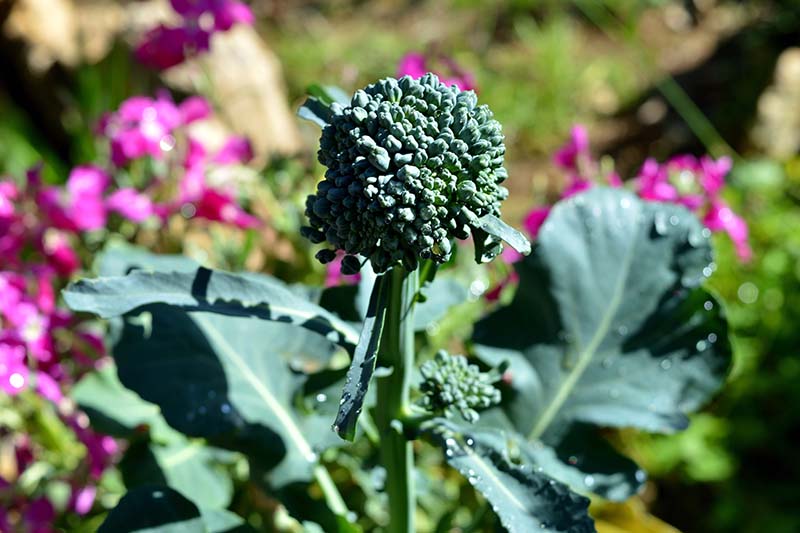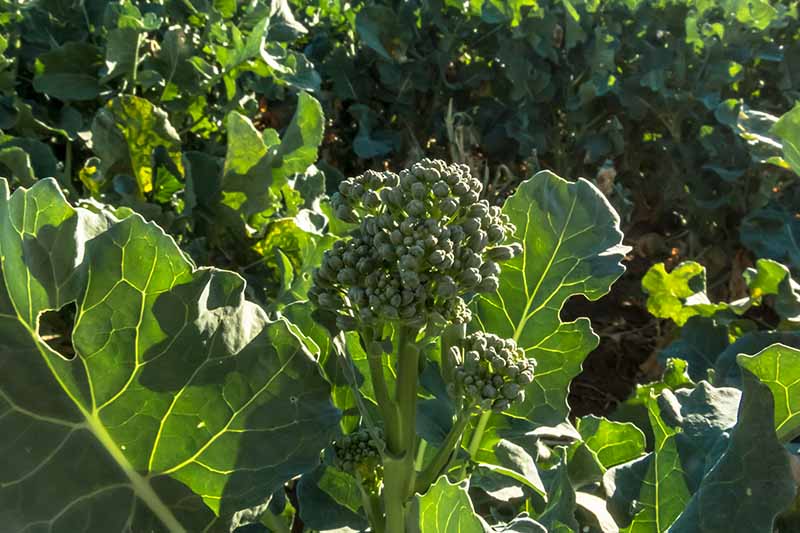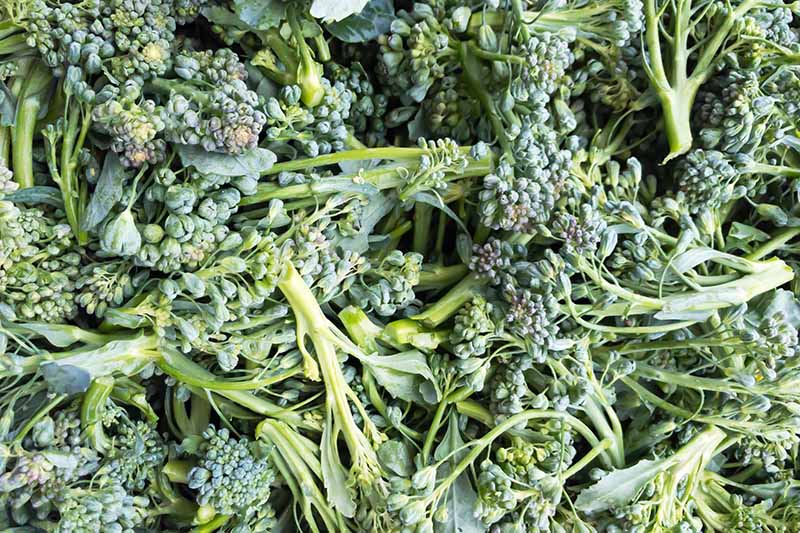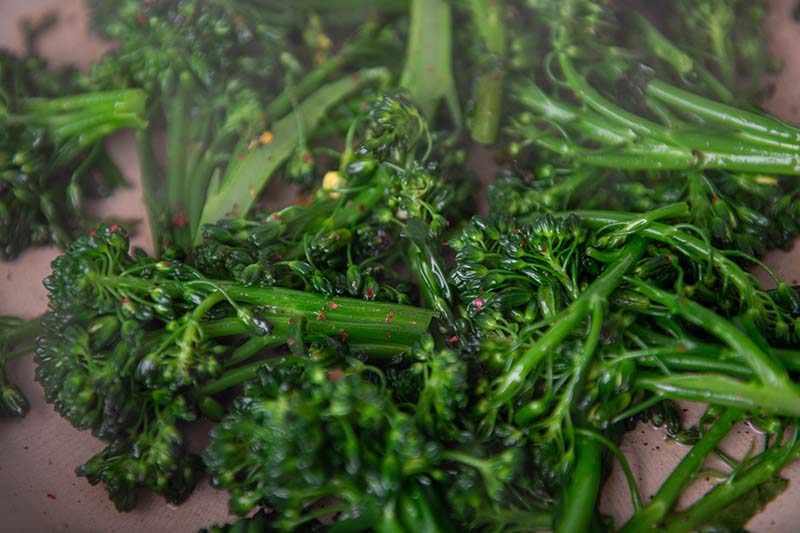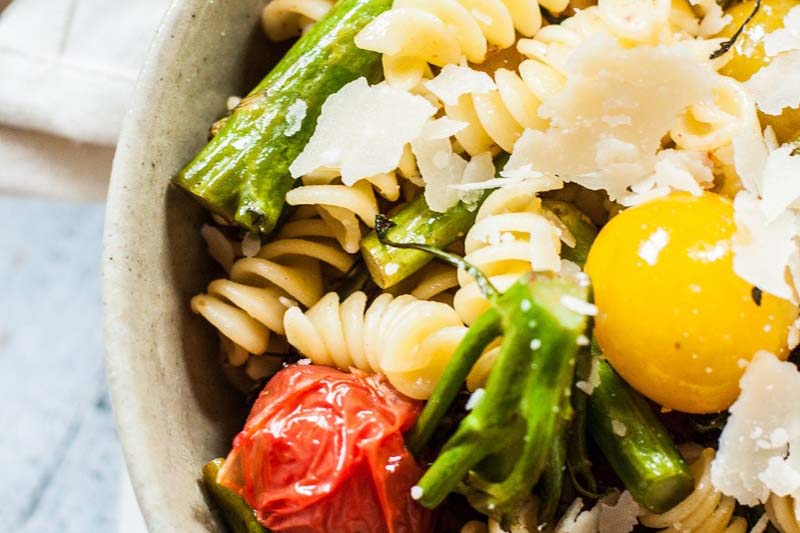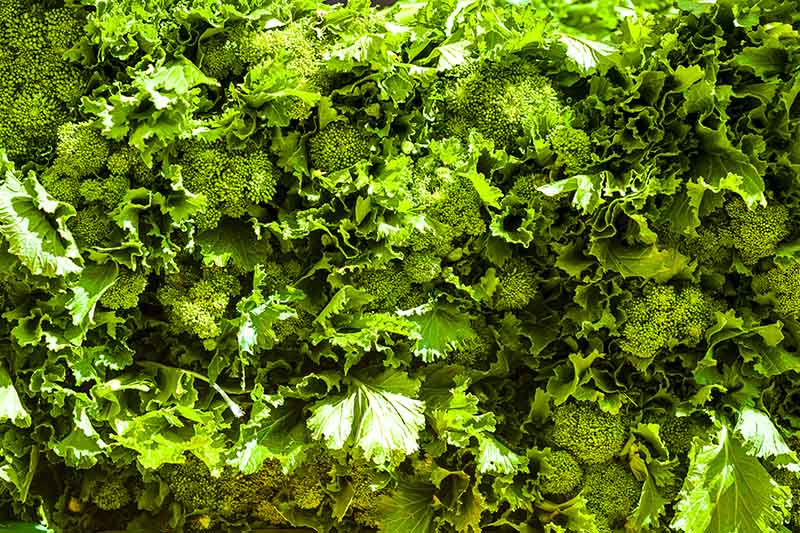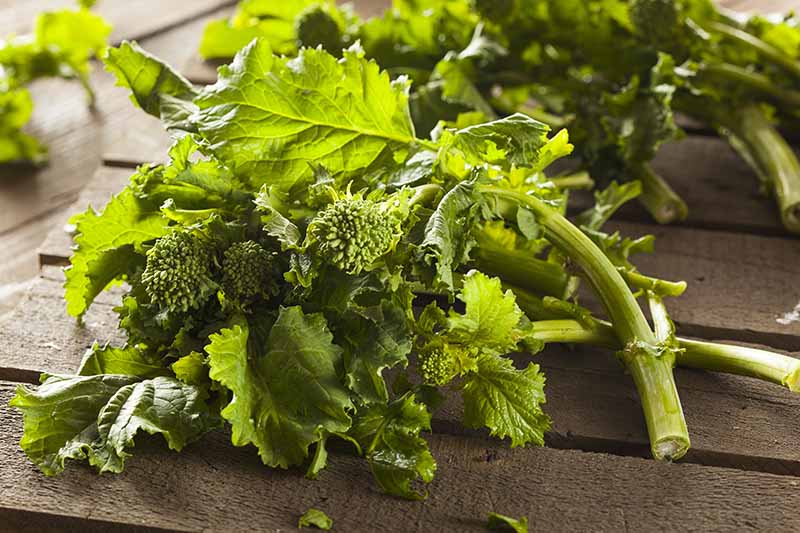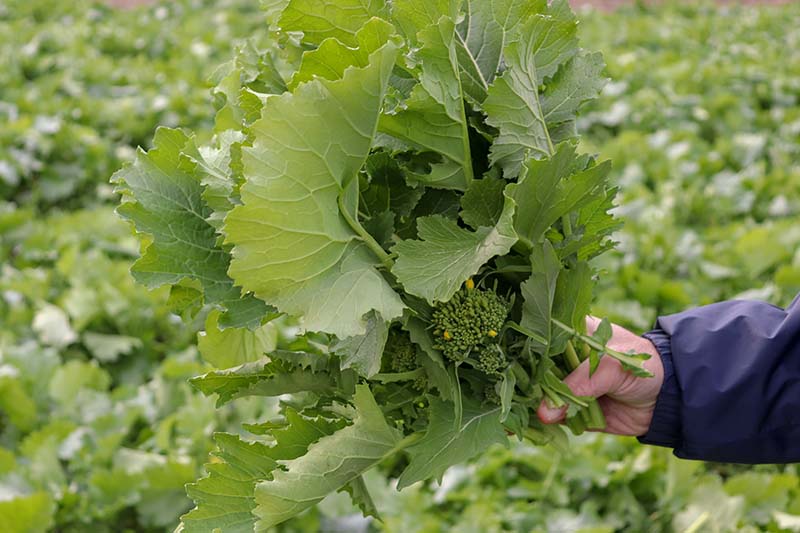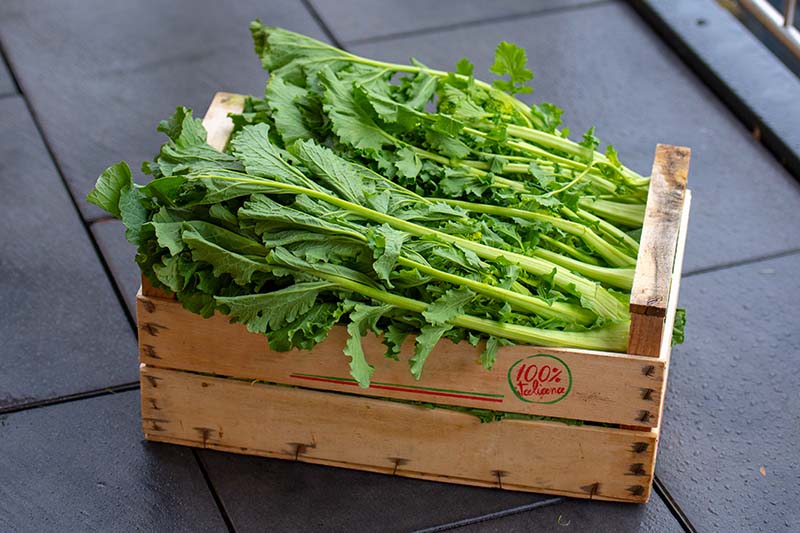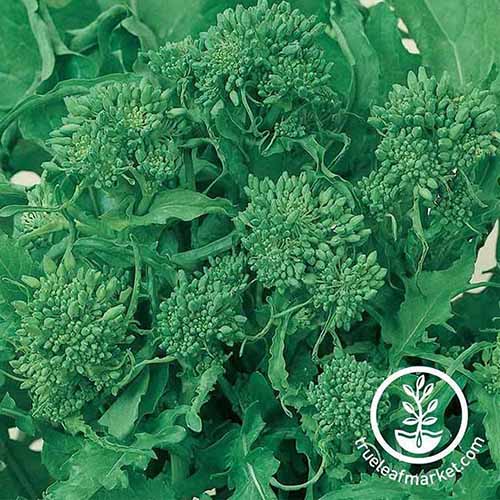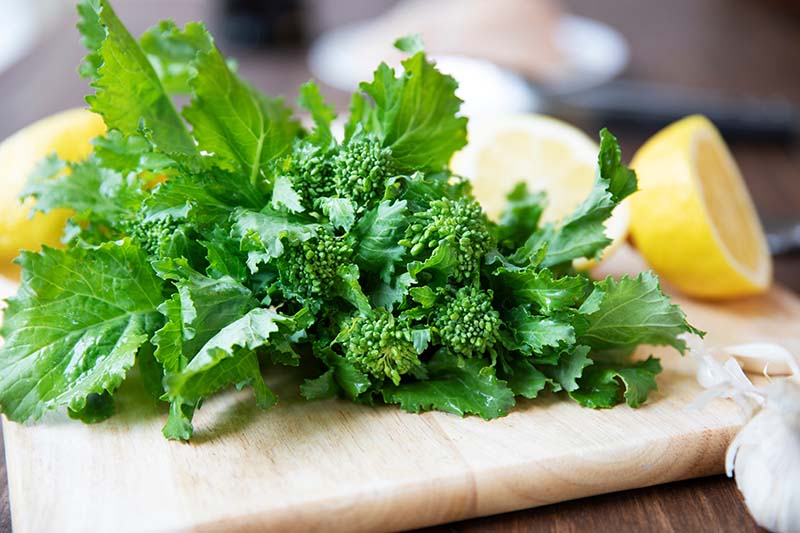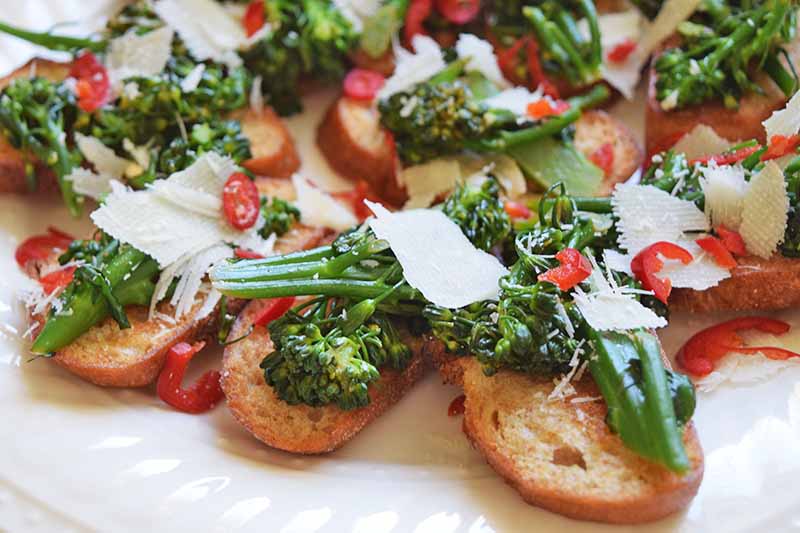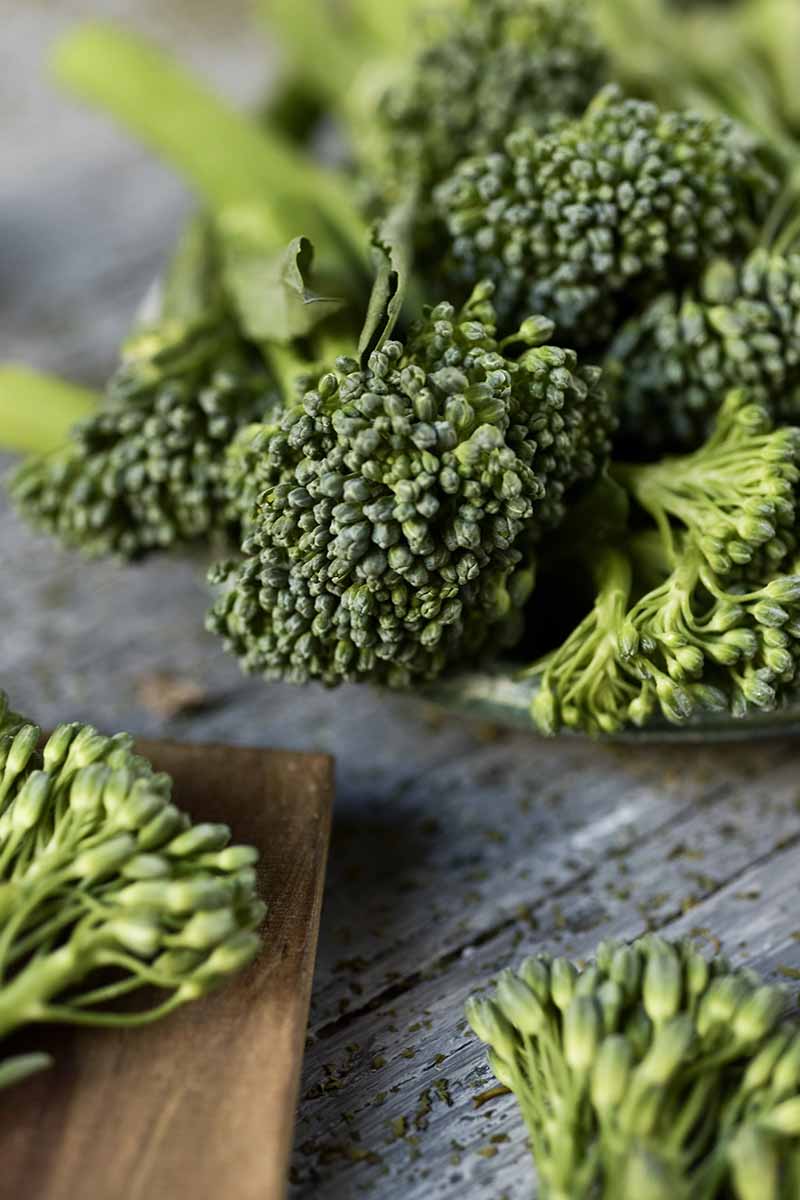Ready for a quick and simple answer? No, they’re not! We link to vendors to help you find relevant products. If you buy from one of our links, we may earn a commission.
Broccolini
Although sometimes called “baby broccoli,” broccolini is not simply an immature version of broccoli. While it’s leaves look an awful lot like those of broccoli, its stems are longer and thinner, and its florets are smaller, looser, and more open. In fact, this vegetable is part broccoli Brassica oleracea var. italica – but only part. The other half of its parentage comes from a lesser-known Brassicaceae family relative, Chinese kale, B. oleracea var. alboglabra.
Origins
This hybrid veggie was bred by the Sakata Seed Company, a Japanese seed purveyor. When Sakata first cultivated this new creation, they tried marketing it under the cultivar name ‘Aspabroc,’ alluding to the slightly asparagus-like taste and texture of its stems.
When ‘Aspabroc’ didn’t make a big hit in the US, Sakata partnered with the Mann Packing Company in California to remarket this vegetable. Under its new name, broccolini, sales took off.
In the Garden
This brassica grows best in a cool season vegetable garden with full sun and regular water. Compared to its broccoli parent, however, this hybrid is less cold hardy, and less tolerant of temperature extremes, but it’s a bit more heat tolerant.
Plants will come to maturity, and be ready for harvest in 50-56 days. You can learn more about growing this gourmet veggie in our dedicated broccolini growing guide.
Flavor
When it comes to flavor, broccolini’s taste is reminiscent of its heritage, thus its nickname “baby broccoli.” ‘Aspabroc’
Different growing conditions will make for some variation in taste, but generally this veggie tastes sweeter and milder than broccoli and can have a taste faintly reminiscent of asparagus.
In the Kitchen
I find broccolini a breeze to handle in the kitchen since you don’t have to worry about cutting up the florets. I like to trim the stems just a tad if needed, then cook the stems whole with the florets attached.
This veggie is a rare treat in all sorts of recipes. When I have it on hand, I like to keep things simple and serve it sauteed with garlic – topped with a squirt of lemon juice, a drizzle of olive oil, and some sea salt.
But broccolini is also delicious roasted or grilled. If the thought of grilling this vegetable has your taste buds clamoring, I recommend checking out this recipe on our sister site Foodal for a grilled tomato and broccolini pasta salad. The spice-loaded balsamic dressing that tops this pasta salad makes this dish quite the flavor adventure.
Broccoli Rabe
Departing from our pursuit of broccolini, we now come to another sort of broccoli – broccoli rabe, or as it is also commonly known, rapini.
The thing is, despite its familiar looking florets and green stems, rapini isn’t a broccoli at all – and the relationship between the two is more distant than you would think. Also known as broccoletto, or sometimes just “rabe” or “raab,” this vegetable is actually closely related to the turnip. In fact, rapini and turnips are not only the same species, but the same subspecies: B. rapa var. rapa.
This relationship becomes apparent when you examine the plant’s leaves. Rapini leaves have toothed margins, like turnip leaves do, unlike broccoli’s smooth leaf margins.
Origins
According to Sonoma County master gardener Sandy Main, the origins of this member of the mustard family go back to either China or the Mediterranean region, both places where it is commonly eaten today.
Culinarily speaking, rapini is very much associated with southern Italian cuisine, but also the cuisines of Galicia, the autonomous community in Spain, and Portugal.
In the Garden
The growing conditions for rapini are similar to those for broccolini – full sun, regular water, in a cool season garden. Where these two differ is in their cold and heat tolerance. Rapini is not as heat tolerant as broccolini. On the other hand, it is very cold hardy and can withstand light freezes very well.
Plants come to maturity and are ready for harvest in 40-70 days, depending on the variety. Typically the plant is harvested before the flower buds open, when plants are 10-15 inches tall. When you harvest, you need to cut the plants at ground level. However, if you leave a couple of leaves behind, rapini plants tend to re-sprout, providing additional harvests.
Flavor
Rapini’s small, green florets may make you expect a certain familiar flavor profile, but its taste is actually more similar to turnip greens or mustard greens. ‘Spring Rapini’ If you’re ready to try this cool season vegetable out in your garden, you can source seed packs of various sizes for the fast-growing ‘Spring Rapini’ cultivar at True Leaf Market. Read more about growing broccoli rabe here. It has a nutty and bitter flavor. However, its sharp, pungent compounds can be reduced – if so desired – by blanching.
In the Kitchen
Since rapini offers you stems, leaves, and florets to work with, you have choices on how to use these.
Rapini’s small, loose florets and long thin stems can be used like broccolini, and its edible leaves can be used like turnip or mustard greens.
Raw, rapini can be turned into pesto. Cooked, it can be used in omelets, stir fries, or as a pizza topping. If you’re ready to expand your culinary range with rapini, I recommend trying out this tasty recipe on our sister site Foodal. It combines rapini florets with pecorino cheese and red chili peppers – and tops these ingredients onto crusty slices of baguette. Sounds like a glorious appetizer or light lunch, doesn’t it? Now that your stomach is growling, are you ready to see a side by side breakdown of these two veggies before you head to the kitchen?
Broccolini and Broccoli Rabe Comparison Table
Which of these two veggies has you inspired to add it to your garden – or throw it into your wok? Let us know in the comments. And if you’re interested in bringing other compelling flavors to your garden patch, you can learn more about growing cruciferous vegetables right here:
How to Plant and Grow Arugula: Make Your Greens Shoot Up Like a Rocket Harvest Hearty Greens from the Garden: How to Grow Kale How to Plant and Grow Turnips for Roots and Greens
